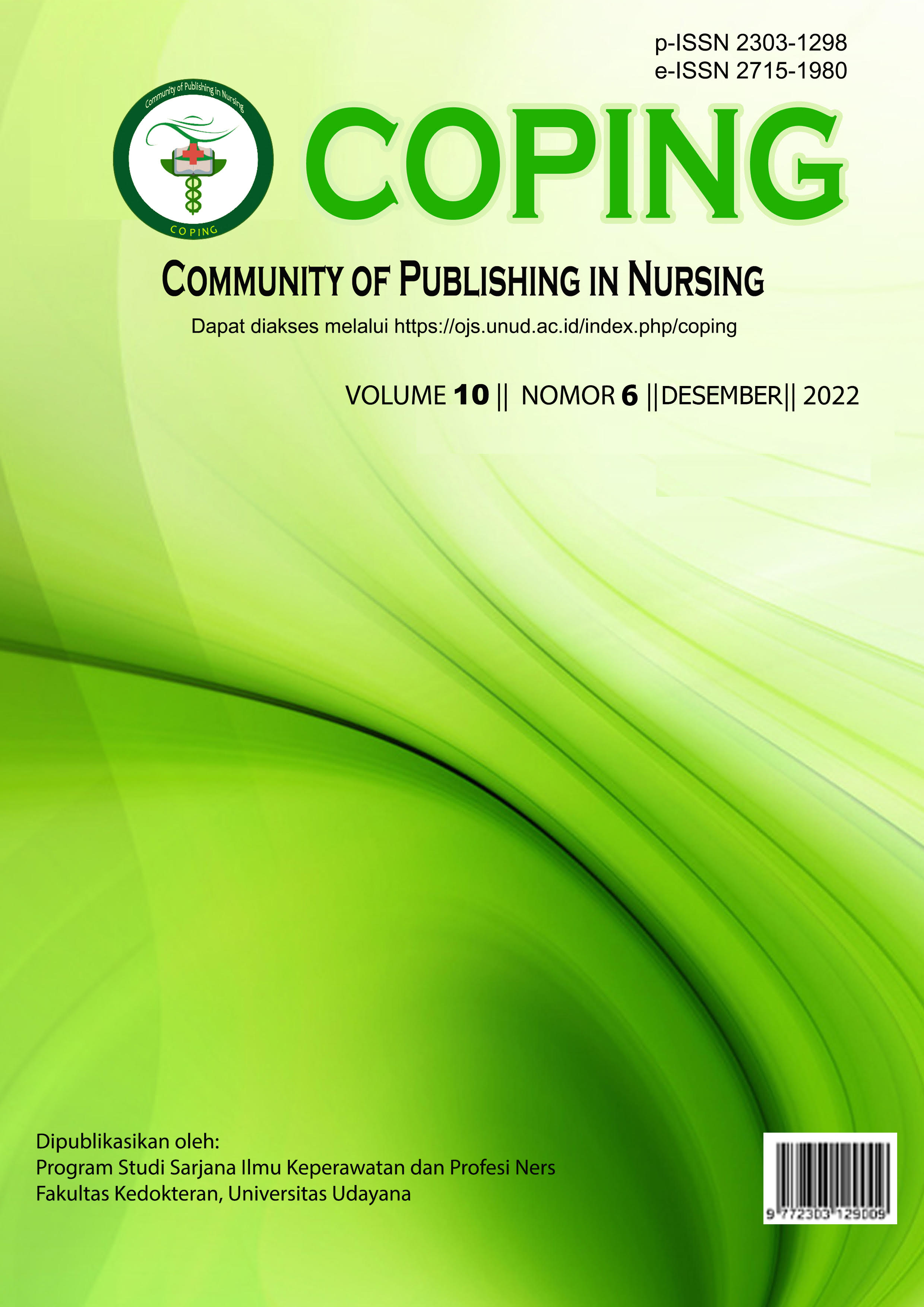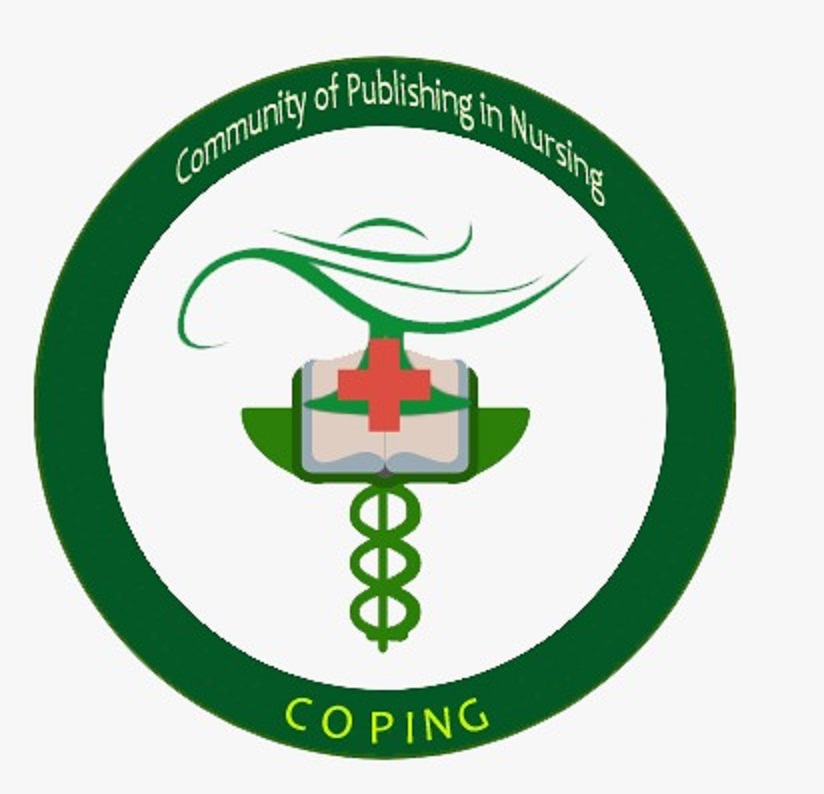HUBUNGAN DUKUNGAN SAUDARA KANDUNG DENGAN KOMUNIKASI INTERPERSONAL PADA ANAK AUTIS DI PUSAT LAYANAN AUTIS KOTA DENPASAR
Abstract
Gangguan komunikasi interpersonal merupakan salah satu masalah yang dialami oleh anak autis. Hal ini disebabkan karena kurangnya perkembangan kemampuan berbahasa sehingga anak autis mengalami kesulitan menyampaikan dan menerima pesan dari orang lain. Salah satu faktor yang mempengaruhi perkembangan komunikasi pada anak autis adalah dukungan dari saudara kandung. Penelitian ini bertujuan untuk mengetahui hubungan dukungan saudara kandung dengan komunikasi interpersonal pada anak autis di Pusat Layanan Autis Kota Denpasar. Penelitian ini menggunakan desain deskriptif korelasional dengan pendekatan cross sectional. Sampel terdiri dari 38 anak yang dipilih dengan teknik total sampling berdasarkan kriteria populasi terjangkau. Pengumpulan data menggunakan kuesioner sibling support dan kuesioner Interpersonal Communication Inventory (ICI). Hasil penelitian menunjukkan bahwa rata-rata dukungan saudara pada anak autis adalah 22,76 dan rata-rata komunikasi interpersonal pada anak autis adalah 18,18. Data yang diuji dengan Spearman Rank (rho) diperoleh nilai signifikansi 0,00 (? = 0,05) dengan nilai korelasi 0,794 dan korelasi berarah positif. Hal ini menunjukkan korelasi yang kuat dengan arah positif yang artinya semakin baik dukungan saudara kandung maka semakin baik pula komunikasi interpersonal pada anak autis.
Downloads
References
Arresa, V., Nirwana, H., & Bentri, A. (2016). Komunikasi Interpersonal Anak dan Orangtua ditinjau dari Jenis Kelamin, Tingkat Pendidikan Orangtua, dan Daerah Tempat Tinggal serta Implikasinya pada Bimbingan dan Konseling. KONSELOR, 5(3).
Arsami, P. (2016). Gambaran Komunikasi Interpersonal Pada Anak Dengan Autis di SLB/A Negeri Denpasar Tahun 2016. Denpasar. Poltekkes Denpasar.
CDC. (2020). Morbidity and Mortality Weekly Report: Prevalence of Autism Spectrum Disorder Among Children Aged 8 Years — Autism and Developmental Disabilities Monitoring Network. In MMWR Surveill Summ CDC (Vol. 69, Issue 16). https://doi.org/10.15585/mmwr.mm6916a4
Desmita. (2016). Psikologi Perkembangan Peserta Didik. Rosda.
Ekawati, Y., & Yustina, Y. W. (2012). Perkembangan interaksi sosial anak autis di sekolah inklusi: ditinjau dari perspektif ibu. P Experientia: Jurnal Psikologi Indonesia, 1(1), 1–15.
Fanada, D. (2017). Menganali Cara Berinteraksi dengan Anak Berkebutuhan Khusus. In IDN Times.
Ferraioli, S. J., Hansford, A., & Harris, S. L. (2012). Benefits of Including Siblings in the Treatment of Autism Spectrum Disorders. Cognitive and Behavioral Practice, 19(3), 413–422. https://doi.org/10.1016/j.cbpra.2010.05.005
Fitri, A., Saam, Z., & Hamidy, Y. (2016). Pengaruh Dukungan Sosial Keluarga Terhadap Perilaku Anak Autis Di Kota Pekanbaru. Jurnal Ilmu Lingkungan, 10(1), 47–57.
Fitriastarina, S. I. (2014). Gambaran Stres Pada Saudara Kandung Anak Autisme Di Tanggerang Selatan. Universitas Islam Negeri Syarif Hidayatullah Jakarta.
Friedman, M. M. (2013). Buku Ajar Keperawatan Keluarga: Riset, Teori dan Praktik. EGC.
Juzri, S. (2014). Gambaran Dukungan Keluarga yang Memiliki Anak Berkebutuhan Khusus di Sekolah Khusus Kota Tanggerang Selatan. UNI Syarif Hidyatullah Jakarta.
Notoatmodjo. (2011). Promosi Kesehatan Teori & Aplikasi. PT Rineka Cipta.
Rochmah. (2011). Gambaran Komunikasi Interpersonal Pada Anak Autis. UNI Syarif Hidyatullah Jakarta.
Soetjiningsih, & Ranuh, I. G. N. G. (2013). Tumbuh Kembang Anak. (Edisi 2). EGC.
Sunu, C. (2012). Panduan Memecahkan Masalah Autisme; Unlocking Autism. Lintang Terbit.
Wijaksono, R. (2016). Studi Kasus tentang Pengaruh Dukungan Sosial dalam Membangun Penerimaan Orangtua Terhadap Anaknya yang Autis. E-Journal Bimbingan Dan Konseling, 6.
Zucker, A., Chang, Y., Maharaj, R., Wang, W., Fiani, T., McHugh, S., Feinup, D. M., & Jones, E. A. (2022). Quality of the sibling relationship when one sibling has autism spectrum disorder: A randomized controlled trial of a sibling support group. Autism, 26(5), 1137–1152.

This work is licensed under a Creative Commons Attribution-NonCommercial 4.0 International License.







